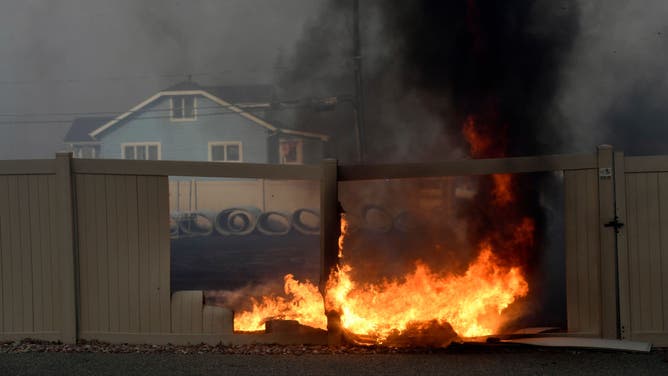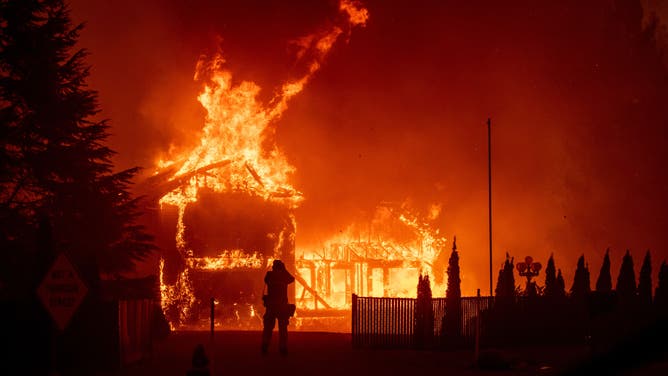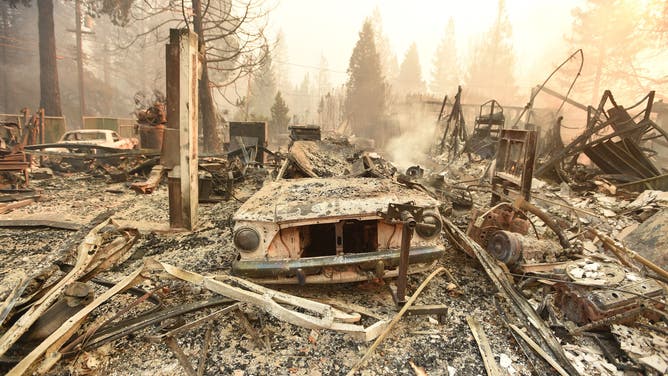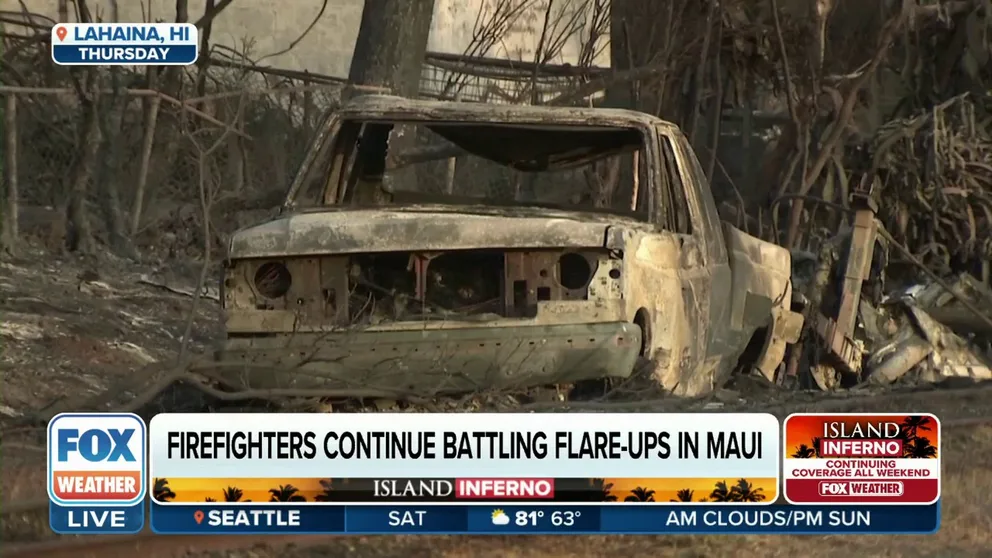Survival expert offers tips to protect your home from wildfires
Families should have supplies and a plan of action in place that keeps their loved ones and home safe, a medical expert says. If local authorities sound the alarm, evacuate the area until it’s all clear.
Wildfire safety tips and prevention
Medical preparedness advocate Dr. Joseph Alton shared tips on how people can prepare their families and their homes for fire weather. August 12, 2023.
Wildfires pose a danger for many families across the country, as seen in fires such as the one that burned in Arizona earlier this summer and the historic fire event that is unfolding in Hawaii.
While wildfires can be ruthless and arise seemingly out of nowhere, homeowners can take action to protect their loved ones and their property from the flames, according to Dr. Joseph Alton, medical preparedness advocate and author of "The Survival Medicine Handbook."

Fires burn fences near structures and homes in the historic downtown area on December 30, 2021 in Superior, Colorado.
(Helen H. Richardson / MediaNews Group / The Denver Post / Getty Images)
Ahead of a fire, Alton recommends creating a defensible space. This involves managing the vegetation around your home, such as removing dead vegetation and wood piles, so there is a lower chance of the fire reaching your home.
"You might have to choose between lush landscaping and fire safety," he said.
STATE FARM STOPS OFFERING HOME, PROPERTY INSURANCE IN CALIFORNIA AMID SKYROCKETING DISASTER RISKS
He also suggested not storing anything combustible under a desk or patio, a common practice among homeowners. This can create a dangerous situation should a wildfire approach the home.
Being mindful of the area around your home is also of great importance.

The 2018 Camp Fire killed 85 people and destroyed 18,804 structures.
(JOSH EDELSON / AFP / Getty Images)
Alton noted a concept known as home ignition zones, which involves dividing up a home into three zones to understand how they may ignite.
The first zone is the Immediate Zone, which includes the home and everything 5 feet around it that may be flammable.
The second is the Intermediate Zone which spans between 5 and 30 feet from the home. This is where careful landscaping, such as pruning low-hanging branches and not allowing tree canopies to touch, stops the fire. Alton also recommended not letting shrubs, grass or other vegetation grow out of control around trees, wood sheds and other wooden structures.
The third home ignition zone is the Extended Zone, which spans between 30 and 100 feet away from the home. In this area, homeowners should make sure canopies, along with saplings that might be growing between mature trees, are spaced 12 feet apart.

The burned remains of a vehicle and home are seen during the Camp fire in Paradise, California on November 8, 2018.
(JOSH EDELSON / AFP / Getty Images)
In addition to minding the vegetation, Alton also suggested creating walkways or walls out of non-flammable materials to interrupt the path of the flames.
He noted that, for families living in an area that is at risk of wildfires, they should have supplies and a plan of action in place that keeps their loved ones and home safe. If local authorities sound the alarm, evacuate the area until it’s all clear.
